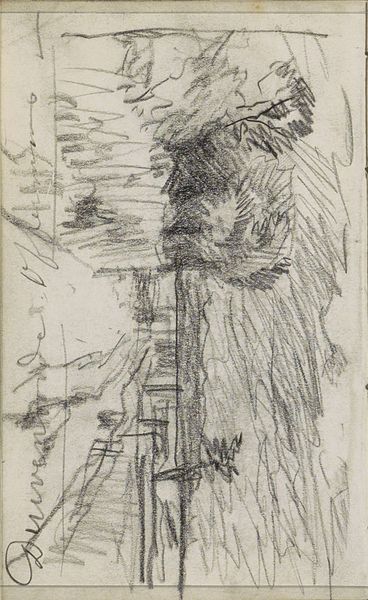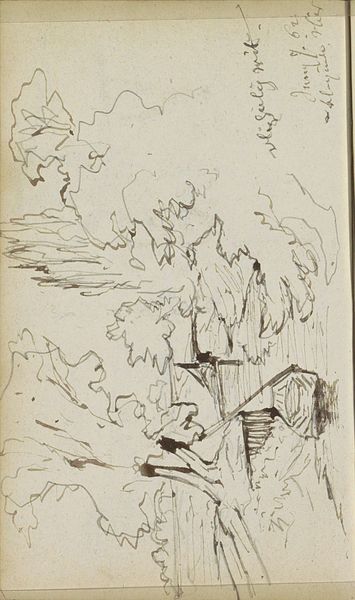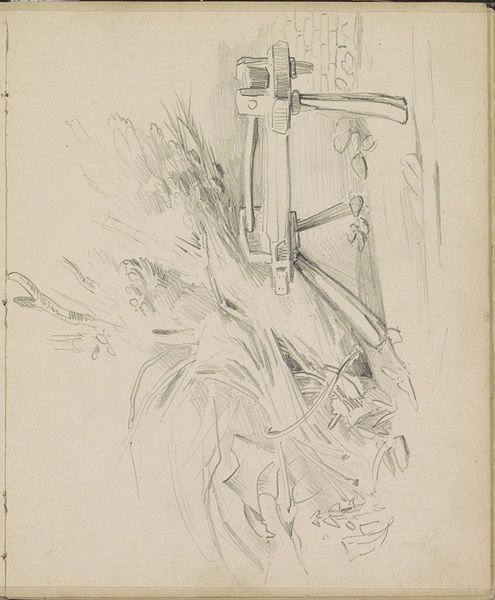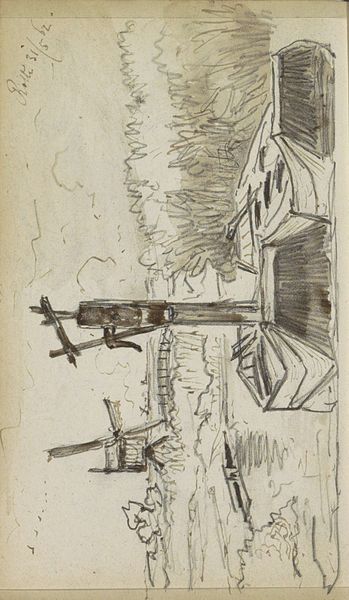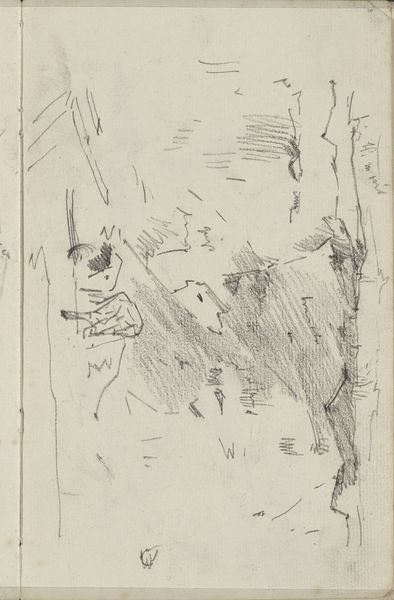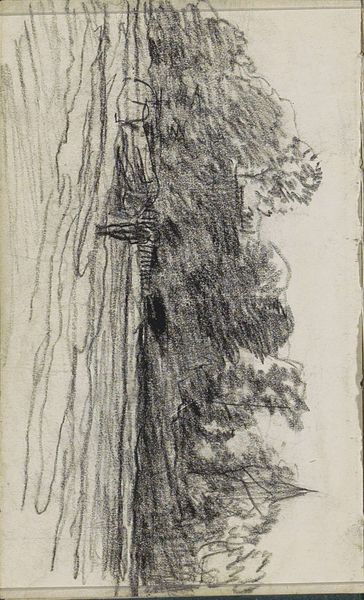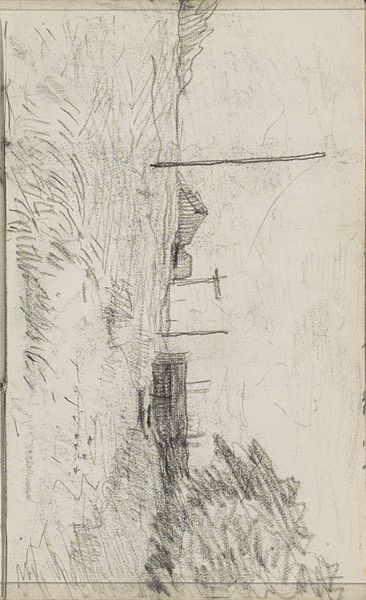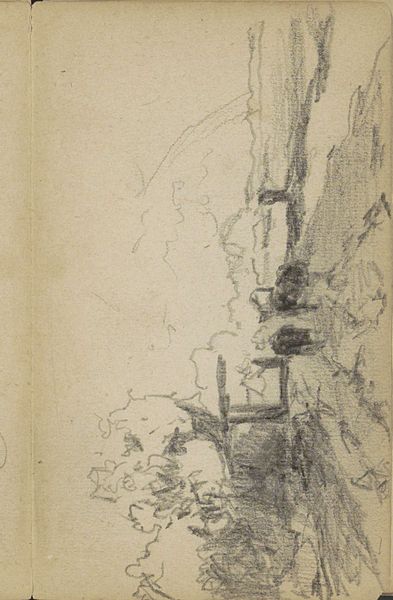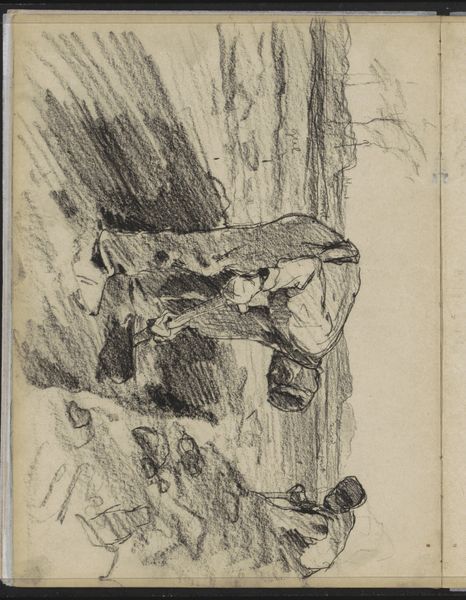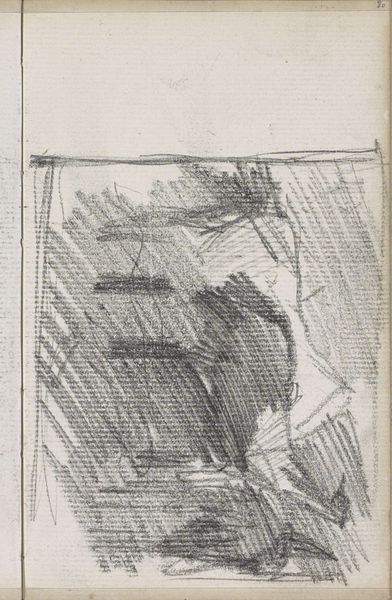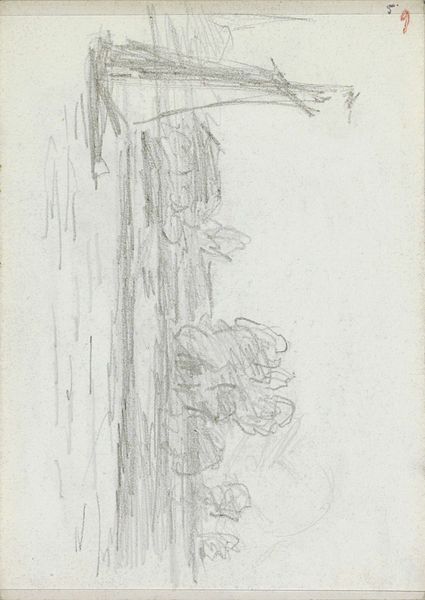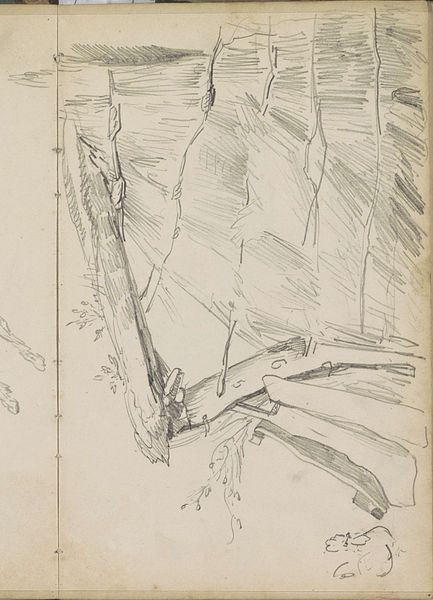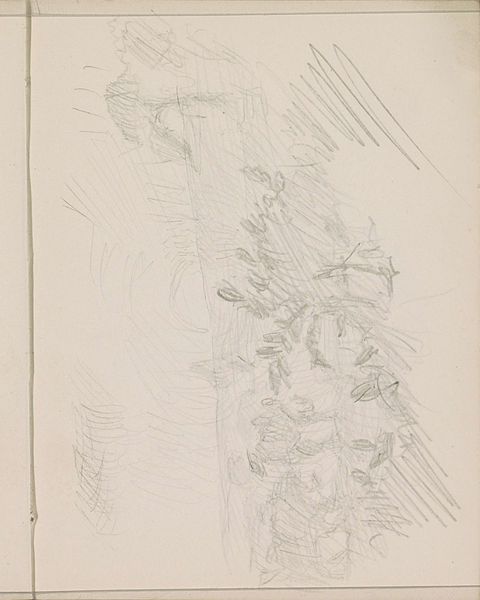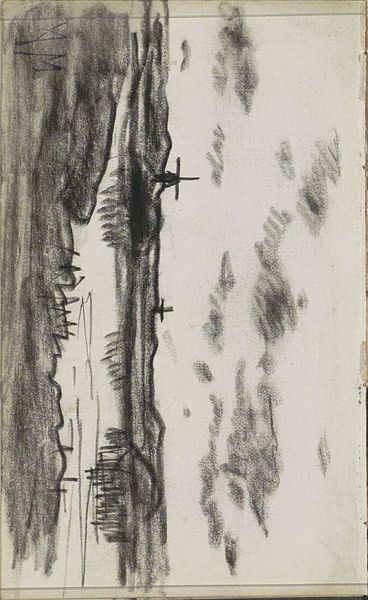
drawing, pencil
#
drawing
#
pencil sketch
#
landscape
#
pencil
#
line
#
realism
Copyright: Rijks Museum: Open Domain
Editor: So, this is "Standing Figure in a Landscape with Trees and a Mill" by Anton Mauve, created sometime between 1848 and 1888. It's a pencil drawing. I’m really drawn to the sketch-like quality, the lines giving a sense of the transient moment. How do you interpret this work? Curator: This sketch provides insight into the artistic culture of the late 19th century. We see Mauve grappling with Realism's demand for accurate observation, but also pushing against it. It prompts questions: who was this figure? Where were they going? Was Mauve documenting a changing landscape impacted by industrial advancements like the mill? Editor: The composition really emphasizes the height of the trees and the mill, making the figure seem small. Curator: Precisely. Think about the rise of landscape painting’s popularity then. Artists sought to capture the essence of nature, but the inclusion of a lone figure also speaks to humanity's place within that vastness. Consider too, the societal context of increasing urbanization. Perhaps the figure embodies a nostalgic yearning for rural life, idealized against the backdrop of industrial change. Editor: That's a perspective I hadn't fully considered – this tension between nature and industry reflected through the solitary figure. Curator: How might this drawing, now in the Rijksmuseum, have been viewed differently when it was created versus today, exhibited within the institutional framework of a museum? Its meaning shifts depending on its audience and place. Editor: It’s interesting how a simple sketch can open up so many different viewpoints about society and its relationship with art. Thank you. Curator: Indeed. It encourages us to question not only what the artist intended, but how art continues to resonate—or change—over time and through various institutional settings.
Comments
No comments
Be the first to comment and join the conversation on the ultimate creative platform.
